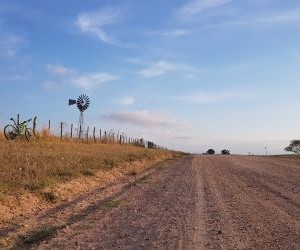Master endurance cycling in tropical climates with effective strategies. Learn hydration, heat adaptation, and training tips for peak performance.
WHAT ARE THE BEST CYCLING RECOVERY SUPPLEMENTS?
Cycling pushes the body through repeated stress—burning glycogen, breaking down muscle fibers, and taxing hydration. Recovery isn’t just about rest; it’s about giving your body the raw materials it needs to rebuild stronger. That’s where supplements come in. From protein powders to electrolytes and omega-3s, the right nutritional aids accelerate recovery, reduce soreness, and prepare you for the next ride. This guide breaks down the best science-backed supplements for cyclists and how to use them effectively.

Protein and amino acids
Protein is the cornerstone of recovery, essential for repairing muscle tissue damaged during long rides. Cyclists often under-consume protein compared to strength athletes, but research shows endurance athletes benefit just as much from adequate intake. Supplementing with protein and amino acids ensures your muscles have the building blocks to recover efficiently.
Whey and plant-based protein
Whey protein is absorbed quickly, making it ideal for post-ride recovery. It provides a complete amino acid profile and stimulates muscle protein synthesis effectively. For those with lactose intolerance or vegan preferences, pea, soy, and rice protein powders offer solid alternatives, though combining plant proteins often gives a more balanced amino acid profile.
Branched-chain amino acids (BCAAs) and EAAs
BCAAs—leucine, isoleucine, and valine—are popular for reducing muscle soreness and promoting recovery. However, recent research suggests that essential amino acids (EAAs) may be superior, as they include all nine amino acids required for muscle repair. Cyclists training intensely may benefit more from EAAs than BCAAs alone.
Consume 20–30g of protein within 30 minutes post-ride.
Choose whey isolate for fast absorption or plant blends for balance.
Use EAAs for complete recovery support.
BCAAs can be useful during long rides to reduce fatigue.
By prioritizing protein and amino acid supplementation, cyclists ensure they’re not just recovering but also building resilience for future efforts. It’s the difference between riding stronger next week or dragging fatigued legs into the saddle.
Electrolytes and hydration
Sweat loss during cycling doesn’t just dehydrate you—it strips the body of electrolytes like sodium, potassium, and magnesium that regulate muscle function and nerve signaling. Inadequate replenishment leads to cramping, fatigue, and delayed recovery. Supplementing with electrolytes accelerates rehydration and keeps your body in balance post-ride.
Electrolyte powders and tablets
Effervescent tablets and electrolyte drink mixes offer an easy way to replace lost minerals. Look for formulations with at least 300–500mg sodium per serving, as sodium is the key electrolyte lost in sweat. Potassium, magnesium, and calcium also play vital roles in preventing cramps and supporting recovery.
Hydration timing and strategies
Cyclists should start rehydrating immediately after rides, not hours later. A mix of water and electrolytes is more effective than plain water, as it restores fluid balance and prevents dilution of sodium levels in the blood. For multi-day events or stage races, structured hydration strategies make the difference between consistent performance and burnout.
Replace 150% of lost fluid volume post-ride.
Choose electrolyte mixes with balanced sodium, potassium, and magnesium.
Avoid plain water-only rehydration for long sessions.
Monitor urine color as a hydration indicator.
Hydration supplements aren’t glamorous, but they are critical. The best protein in the world won’t help if your body remains dehydrated. Think of electrolytes as the foundation that allows all other recovery tools to function properly.
Anti-inflammatory and recovery boosters
Cycling-induced inflammation is both natural and necessary for adaptation, but excessive inflammation slows recovery and increases soreness. Certain supplements help regulate this process, allowing muscles to heal while reducing discomfort and fatigue.
Omega-3 fatty acids
Found in fish oil and algae-based supplements, omega-3s reduce exercise-induced inflammation and support joint health. Studies also suggest they may enhance muscle protein synthesis when combined with protein intake, making them a valuable addition to a cyclist’s recovery arsenal.
Antioxidants and natural recovery aids
Tart cherry juice, curcumin (from turmeric), and green tea extract are popular natural recovery supplements. These antioxidants help reduce oxidative stress from prolonged rides and can shorten recovery time between sessions. However, excessive antioxidant use may blunt training adaptations, so balance is key.
Take omega-3s daily for joint and muscle support.
Use tart cherry juice or curcumin post-ride for reduced soreness.
Avoid over-supplementing with high-dose antioxidants.
Combine natural recovery aids with protein for synergy.
Inflammation management is about balance. Supplements like omega-3s and antioxidants don’t replace rest and nutrition, but they amplify your body’s ability to bounce back. Used strategically, they can keep you fresher for back-to-back training sessions or racing blocks.
YOU MAY ALSO BE INTERESTED






